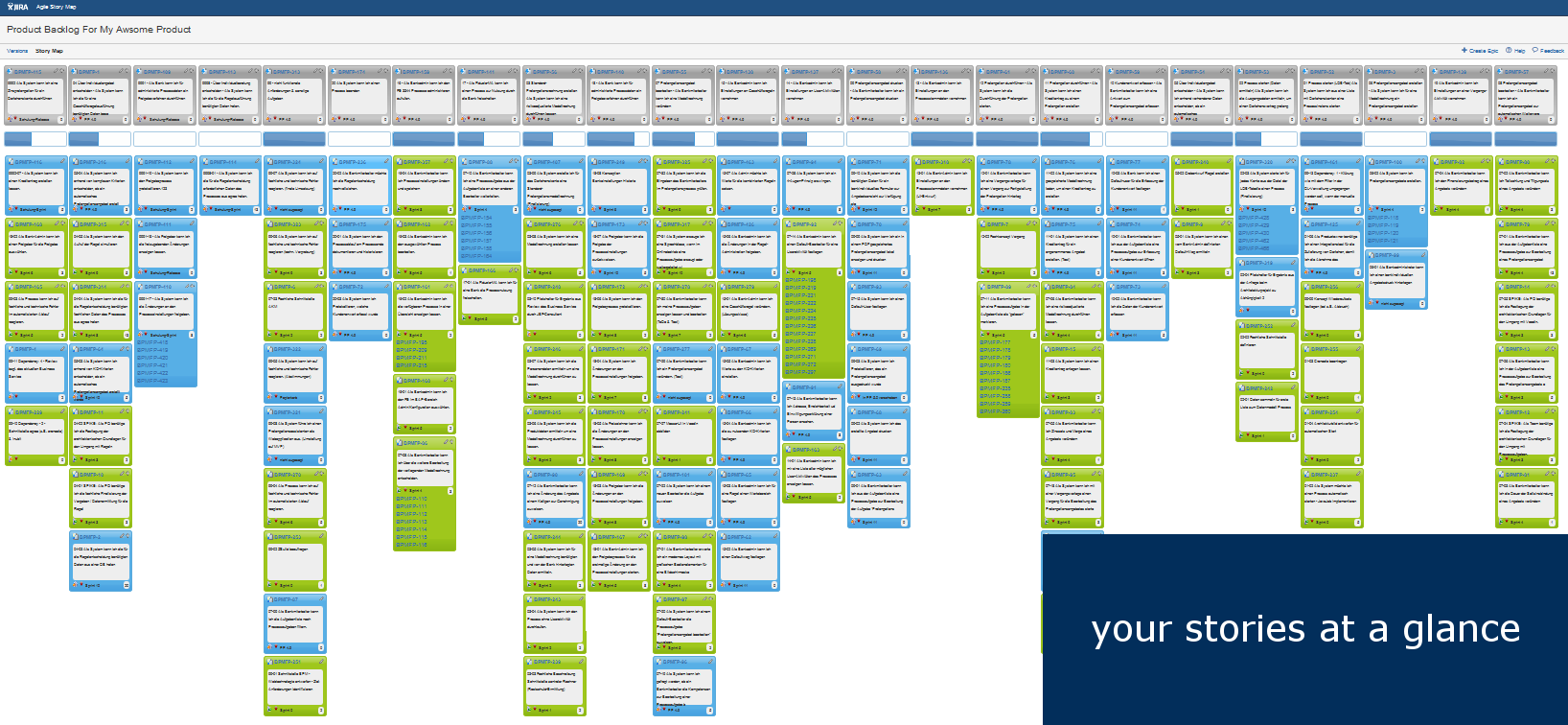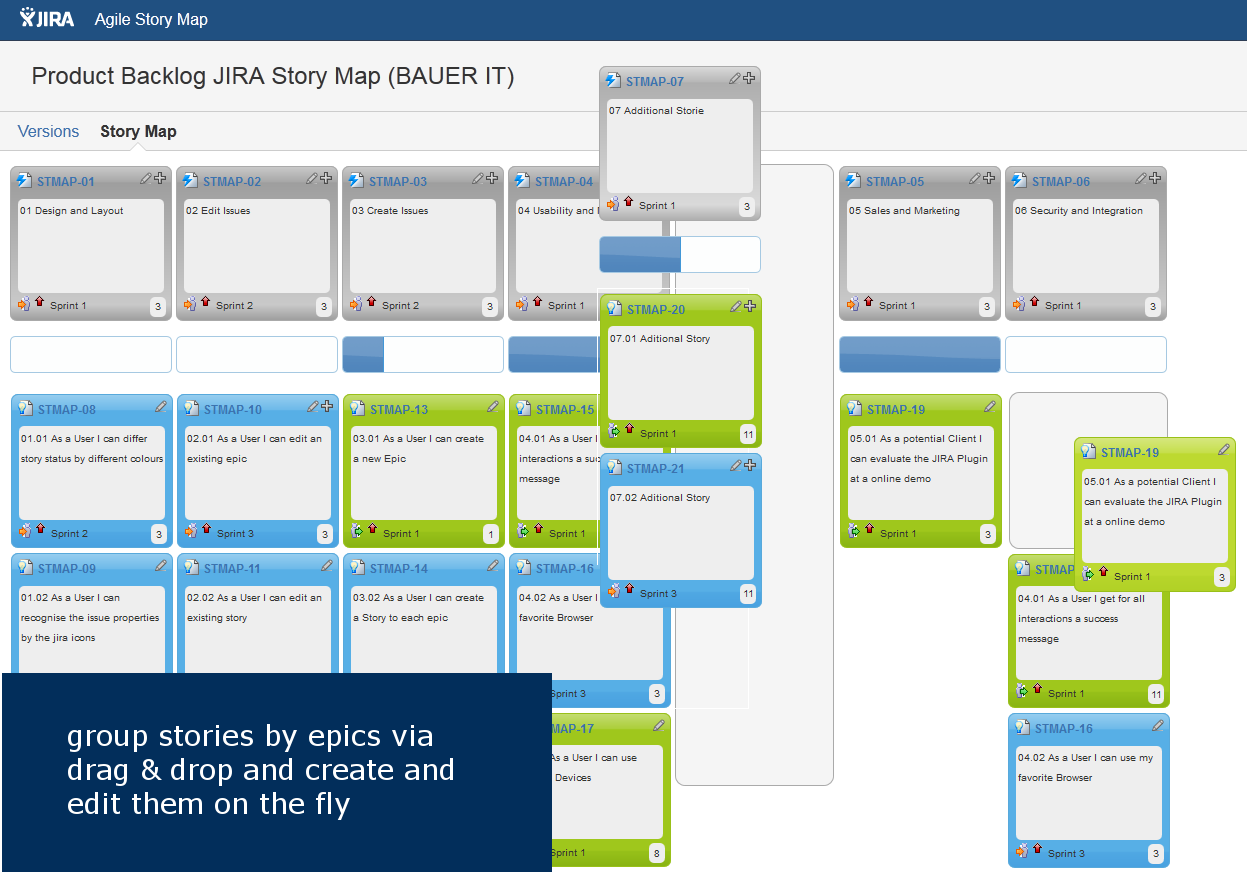Unlock a world of possibilities! Login now and discover the exclusive benefits awaiting you.
- Qlik Community
- :
- All Forums
- :
- QlikView App Dev
- :
- Agile Story Map
- Subscribe to RSS Feed
- Mark Topic as New
- Mark Topic as Read
- Float this Topic for Current User
- Bookmark
- Subscribe
- Mute
- Printer Friendly Page
- Mark as New
- Bookmark
- Subscribe
- Mute
- Subscribe to RSS Feed
- Permalink
- Report Inappropriate Content
Agile Story Map
We are trying to develop a reporting solution for Agile teams and looking for creating an Agile Story Map similar to attached images below. Any design solutions please ?


- Tags:
- new_to_qlikview
- Mark as New
- Bookmark
- Subscribe
- Mute
- Subscribe to RSS Feed
- Permalink
- Report Inappropriate Content
Hi Arpit,
Do you have the end to end Requirements? The Requirements should have everything about your Agile Process, to your Business Process, to your Project Process, etc...
Once you have all the Requirements, and can share it, a solution can be devised.
Why you need requirements is because the Agile process in one company varies with other companies and project to project.
The way I see it:
1. You have a backlog of stories. Each story has several attributes such as Created by, updated by, assigned by, assigned to, name, description, statues, and color to name a few.
2. Then you have sprints (1 - x)
3. Then you have sprint backlog and team members
4. Then you have features and epics.
Once you have defined all that within your business process or in a generic process, you can build a Custom Extension in QlikView with some kind of a Cross Functional Time Box Chart Combined with a Grid.
You would have to decide what you want to go in your rows and columns. From your example I can see that you would need several views, one view for Epics that enables drill down into a view for stories in that Epic.
Your Chart would have row and columns.
The Columns would define the Status or state of your epic/story and the rows would define the developers assigned for each piece of the story.
The above is just a quick example. But you would need to clearly define your requirements in order to get a Qlik View Developer/Designer to build an Extension for Agile Story Map.
If you can't afford a QlikView Developer/Designer, all the above can be done in a Pivot Table in simplest form.
Cheers,
Paul